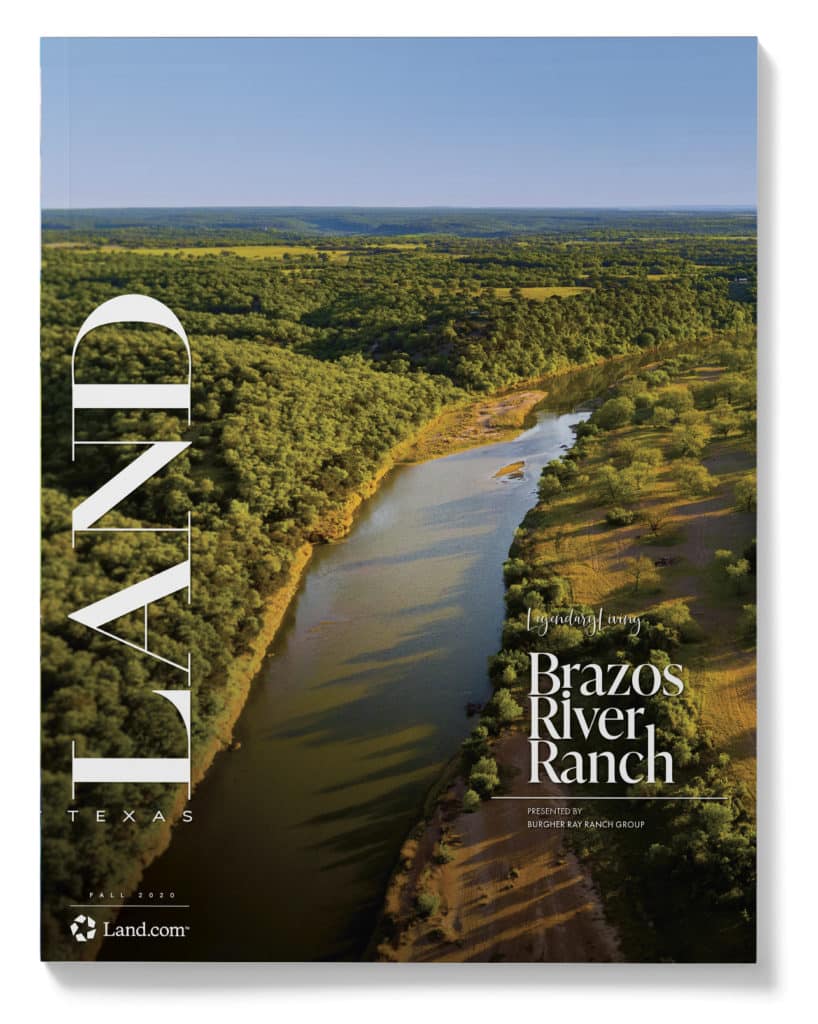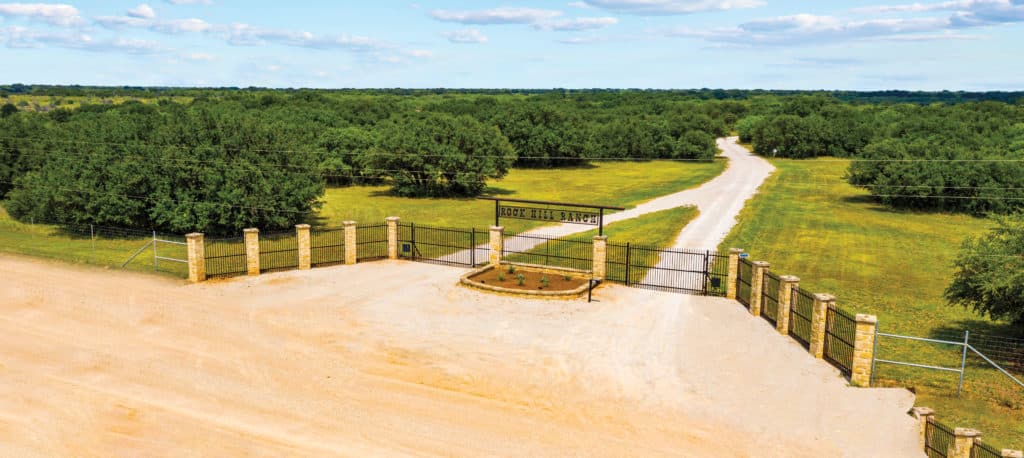
This article is featured in the Fall 2020 issue of Texas LAND magazine. Click here to find out more.
Gates are as much a part of Texas’ rural landscape as bluebonnets and wide-open spaces. But when it comes to design, tastes in the Lone Star state are as varied as the terrain.
In the rocky Hill Country, entrances include a mix of stone, cedar and metal—the combination of which makes the entrance as dramatic or understated as the landowner desires. Arches rule the day in West Texas and the Panhandle. South Texas entrances often feature rugged native plants. And the farms, ranches and timberland of East Texas frequently boast brick columns and board or pipe fencing.
“The geographical area typically dictates the type of a gate someone installs,” says Jeri Langehennig, senior relationship manager at Capital Farm Credit in Mason. “Kerrville and the Garner State Park areas are ranch country. So, there you’ll see gates with dried stack rock. Likely, you’ll want the gate to mirror the look and feel of the area.”
Get Started
With gates, you can pay as much or as little as you want. Property owners might spend $3,000 for a basic gate with an automatic opener. Others may spend $100,000 or more for custom masonry and metalwork. Culverts and other improvements add to the price.
There are several ways to finance an entrance. You can finance it with:
The land purchase
Improvements such as fencing and land clearing
An operating line of credit
“Being able to spread the cost over a term is an advantage,” says Kenneth Hooper, senior vice president at Plains Land Bank’s branch office in Plainview. “You can have manageable debt rather than burning all of your liquidity making capital improvements.”
Design for Form and Function
Whether simple or ornate, gates provide security and give entrances personality.
Many owners display how they use their property like a badge of honor. Gates and arches commonly feature metal silhouettes of livestock, cattle brands, tractors or wildlife.
“The plasma cutter has made a huge difference in entrances. If you can dream it, they can cut it,” says Hooper. “Whether it’s Rancher Jones or Dr. Jones, the owners put their signature on a piece of land in some fashion to communicate with their workers and peers.”
Enhance with Technology
While the materials and designs vary from region to region, gates share a common duty: to keep animals in and unwanted visitors out. New technology makes it simpler.
One way to enhance an entrance is to add an automatic gate opener. It can be hard-wired or solar-powered, and operated by remote or keypad. And you can customize your entrance with a variety of security features. There are even mobile-friendly options that allow you to observe and control your gate through an app.
Technology lets owners monitor who’s accessing the property and when by using different codes or taking pictures of people passing through”
Jolene Curtis, chief operating officer for Texas Farm Credit
“Technology lets owners monitor who’s accessing the property and when by using different codes or taking pictures of people passing through,” says Jolene Curtis, chief operating officer for Texas Farm Credit, who is based in Brenham. “Land with oil and gas leases will have multiple people coming in and out, for example.”
Keep Safety in Mind
When you’re ready to build, make sure your entrance is designed with safety and practicality in mind. Most rural driveways adjoin high-speed roads. So, think about visibility and room to maneuver, brake and accelerate.
“Practically speaking, engaging the transportation agency that maintains the road is important. And the sooner the better,” says Bill Eisele, a Texas A&M Transportation Institute senior research engineer. “They work with landowners and are knowledgeable about driveway safety and any driveway placement and design requirements.”
Choose a Contractor Carefully
For a safe, functional and attractive entrance, choose the right business partner.
Look for a local contractor with the experience and equipment to make rural property improvements.
Get bids and warranties in writing, and make sure they’re in line for your area.
Check references.
Make sure the contractor obtains necessary permits and inspections.
“There can be a big price discrepancy between builders,” Curtis says. “My main recommendation is to get referrals, interview the contractors’ clients and look at some of their work.”
Landowners can choose from an array of gate designs to reflect their style, operation and interests. Whether simple or ornate, gates provide security and give entrances personality. With financing and a reputable contractor, all you need to make your dramatic entrance is a little imagination.
10 Tips for Building Rural Entrances
- Contact the appropriate state, county or municipal agency about driveway design, placement, rights of way and permits.
- Locate driveways away from curves and hills, and avoid blocking visibility with masonry, fencing, vegetation and mailboxes.
- Consider installing separate entrances for different functions, such as a residence, ag operation, or oil and gas activity.
- Make sure the entrance is wide and tall enough for the vehicles and equipment you use.
- Set the gate far enough from the road to accommodate trailers and right of way requirements.
- Add a turn lane so driveway users can slow down without blocking traffic.
- Install gate openers, intercoms, driveway sensors or cameras for security and convenience.
- Use reflectors or lighting to improve visibility.
- Ensure good drainage with proper placement, slope and culverts.
- Check your county soil survey to verify the soil can support traffic.

